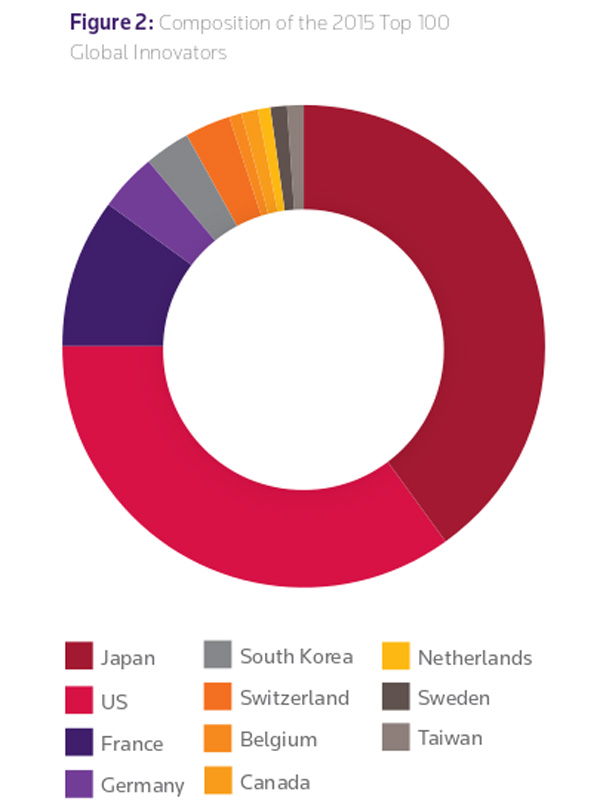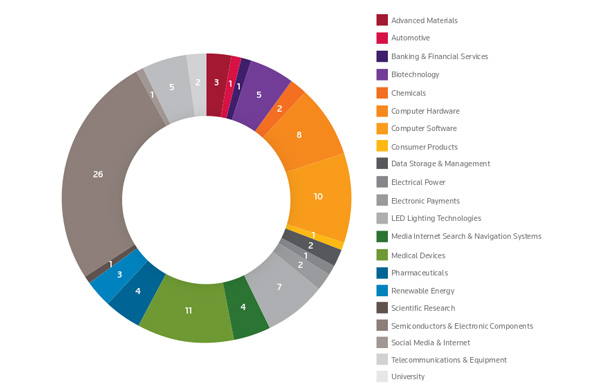G'bye IBM, hello Amazon: the top 100 Global Innovators list looks a lot like 2015

Each year for the past five years, Thomson Reuters puts out a list of the top 100 global innovators. It serves as a compass of sorts - indicating where we as a civilisation are headed, and which countries are most hospitable to discovery and innovation.
This years list, out this week, does precisely that.
And what it points to is the inability of certain giants to keep up with a constantly shifting landscape. Huge players like Xerox, Siemens and even IBM - brands that made the cut every year the list has been published - no longer make the rankings this year.
Also read - Smile Please: Microsoft's new software can tell how you're feeling from a photo
Who replaced these giants of the past? A handful of gamechangers including Amazon - who debuted in style all the way up at number 8.
But first, just what counts as innovation and how does one even measure it?
Making the grade
When Thomson Reuters talks innovation, they primarily mean patents. But they also take it a step or few further.
Just to be eligible for the list a company has to first fulfill a simple criteria of quantity. Only companies with over 100 unique inventions/patents over the most recent 5-year period are even eligible for consideration.
Once this first stage has been cleared, the company's success ratio when it comes to patents granted is considered. The greater the percentage of accepted patents, the better.
Thirdly, Thomson Reuters considers the global protection of a patent: the more places an invention is protected, the more valuable the patent.
Finally - and arguably most important - the impact of the patents is taken into account. The more a patent is cited by other companies in their own innovations, the more influential it is considered to be.
Accounting for all these factors, Reuters compiles their top 100 list.
The need for innovation & the value of the list
The word innovation gets bandied about a lot these days. Like epic, awesome and other words that have lost all meaning through overuse, innovation today refers to everything from a particularly bendy straw to a potentially lifesaving drug.
That's why it matters how it's measured - and the metric of patents, while contentious for many, is still one of the best ways to do it.
In an age where intangible assets like intellectual property (IP) make up over 80% of the value of the entire Standard & Poor's 500 index, patents are a particularly important and invaluable measurement of innovation.
IBM isn't on the Thomson Reuters' top 100 global innovators list for the first time ever
IP-intensive companies are also particularly important to the economy.
In the US alone, over $5 trillion in economic activity and 40 million jobs are the result of such companies. Even startups are valued based on their patent portfolio. Startups with larger portfolios tend to attract about $10 million more in investment than rivals with fewer patents.
Then there's the fact that the 100 companies on the list outperform other indices such as the Morgan Stanley Capital International index - both in terms of revenue generated as well as employment figures. The writing is on the wall: innovation means greater revenue and greater success.
The winners and losers
The big winners this year, as in previous years, are the US and Japan.
The two countries account for 29 out of the 30 companies that have made the grade for all 5 editions of the list thus far.
Japan pips the US with 15 as opposed to America's 14. The other countries that manage representation are spread across Europe - with South Korea and Taiwan the only spoilsports on the list.
It's pertinent - and disappointing - to note that neither India nor China make the list; India has never made it while China had a solitary representative on it last year in the form of Huawei - a shortlived joy. It's not that India and China are entirely lacking in innovation as much as it is about the lack of properly developed patent systems.
Despite the absence of the two 'giants', Asia has the single largest continental presence on the list, with 40 companies.

Those who didn't make it - and those that did
Siemens, IBM, AT&T and Xerox fell off the list this year.
While the absolute number of patents filed by these companies hasn't really dropped, what has is their influence.
On the other hand influential brands like Uber and Snapchat who have achieved stratospheric success over the past year don't make the cut due to their relatively low numbers of patents filed.
It's where Amazon wins. The company, which stormed into the list at number 8, has stepped up innovation in the areas of data centres, devices and electronic methods and systems. With dozens of inventions each month, the e-retailer's desire to invest in the manufacture and sale of its own goods has lead to the company's high ranking.
Interestingly, three oil and gas companies, an industry thoroughly absent in the 2014 list, made the cut this year, thanks to new developments in alternative energy and fracking.
Automobile manufacturers have also seen an increase in representation thanks to innovation in hybrids and increasingly greener and more efficient technology.
The semiconductor & electronic components industry, while still managing twelve representatives, has seen an almost 43% drop in representation. The report makes it clear that while the industry is still vital, new industries have sprung up to make technology faster and more efficient.
Conversely chemicals and pharmaceuticals have only grown in importance as their applicability in related fields like food and cosmetics has increased.








![BJP's Kapil Mishra recreates Shankar Mahadevan’s ‘Breathless’ song to highlight Delhi pollution [WATCH] BJP's Kapil Mishra recreates Shankar Mahadevan’s ‘Breathless’ song to highlight Delhi pollution [WATCH]](https://images.catchnews.com/upload/2022/11/03/kapil-mishra_240884_300x172.png)

![Anupam Kher shares pictures of his toned body on 67th birthday [MUST SEE] Anupam Kher shares pictures of his toned body on 67th birthday [MUST SEE]](https://images.catchnews.com/upload/2022/03/07/Anupam_kher_231145_300x172.jpg)






